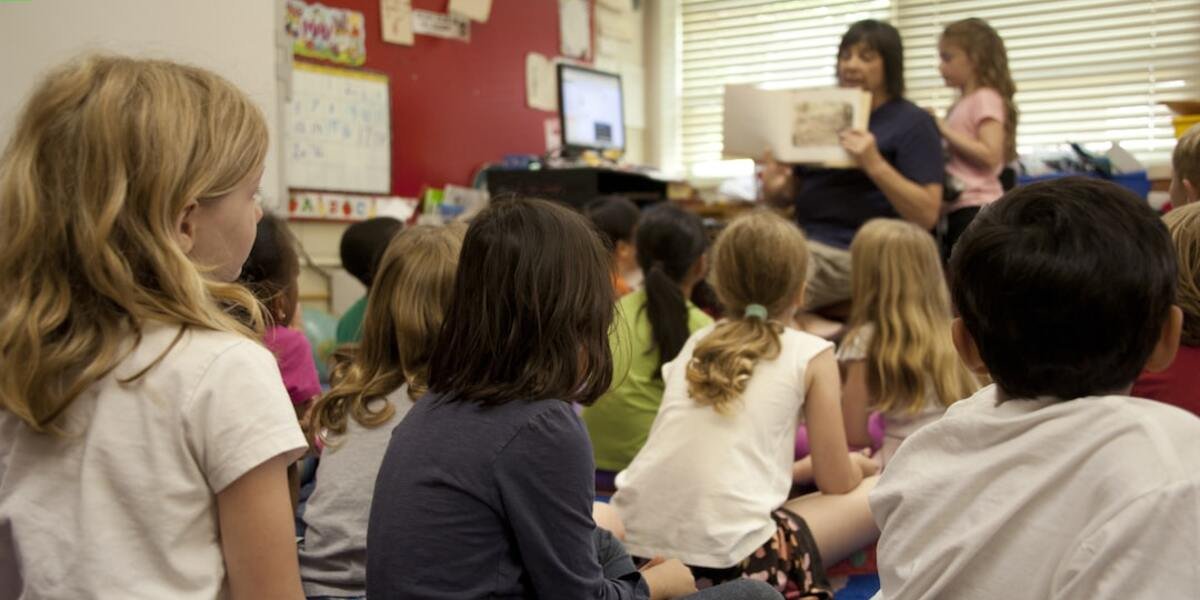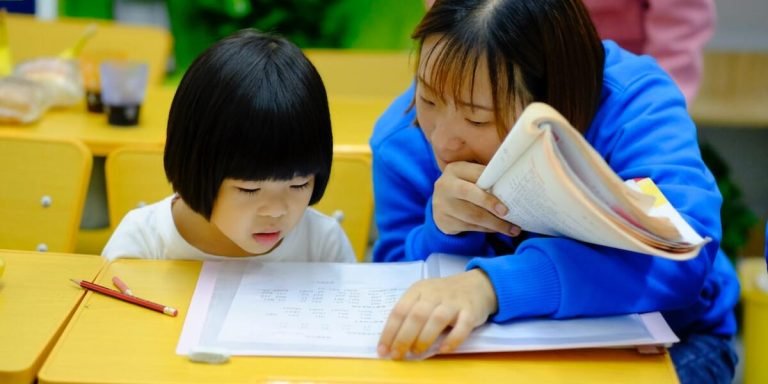Childrearing Practices: Shaping the Future Through Nurturing Guidance
The foundation of every society is firmly rooted in its childrearing practices. Indeed, the way children are raised greatly influences their abilities to become effective individuals and contributing members of society in adulthood. Thus, it’s safe to assert that forward-thinking and nurturing guidance can shape our future by cultivating competent, responsible adults.
Parent and educator support plays an important role here; a joint effort between parents and educators often result in the best outcomes for children’s development. In this blog post we will explore strategies both parties can use to offer beneficial guidance while fostering a loving environment conducive for growth among youngsters hence effectively sharpening successful childrearing practices.
Did you know?
Did you know? The World Health Organization states that positive interactions between parents and children, such as engaging in play activities together, are crucial for the child’s cognitive, language and socio-emotional development.
Understanding the Impact of Varying Childrearing Practices
Childrearing practices are as diverse as the cultures they stem from, each carrying its own set of beliefs and systems. Yet a growing trend in 2023 is incorporating technology into these nurturing routines, radically reshaping traditional methods.
The integration of modern tech tools has opened up new avenues for learning and development in children’s daily lives. Applications running on smartphones or tablets offer an interactive form of education that can cater to different learning styles at once, producing significant progress for young learners. For example, e-books and online storytelling platforms enable auditory-visual engagement essential for language acquisition while educational games instill problem-solving skills under the guise of entertainment.
However, it’s crucial to remember that effective child-rearing extends beyond smart gadgets alone—it also demands active involvement by parents and educators alike who must guide their wards through this digital landscape diligently.
To navigate this evolving terrain effectively requires both parties—parents and teachers—to constantly stay updated about latest trends offering innovative teaching methods integrated with technology; not just utilizing them but understanding how to adjust according to individual needs too.
In conclusion, integrating advanced technological tools alongside conventional teaching techniques within standard parenting strategies ensures wholesome growth capable of turning youngsters into skilled navigators competent enough to chart their paths successfully in future digital landscapes. The key lies in collaboration between instructors armed with expertise & caregivers invested ensuring optimal upbringing – indeed transforming child-rearing practices across generations today!
The Role of Parents in Shaping Behavioral Outcomes
Parents play a pivotal role in shaping the behavioral outcomes of their children. Their childrearing practices, both conscious and unconscious, significantly influence how kids adapt to various situations at school and home.
The first aspect parents should consider is nurturing emotional intelligence. Emotional strength forms the foundation for coping mechanisms that children develop as they grow older. By guiding emotions effectively, we encourage them to react appropriately in different social contexts.
Secondly is enhancing communication skills which are naturally intertwined with emotional intelligence. Healthy interaction assists youngsters not only socially but also academically where verbal articulation becomes essential for demonstrating knowledge.
A key factor often overlooked during upbringing falls within discipline strategies adopted by parents or educators alike—excessive sternness might hinder natural growth while too much leniency can foster irresponsibility among young minds consistently treading new territories of learning every day.
Another point lies in leading by example – actions indeed speak louder than words when it comes to parenting methodologies still strongly advocated now even past 2023 due to its undying relevance throughout changing times ever since human civilization began emphasizing education importance on societal welfare.
How Educators Can Complement Parental Childrearing Efforts
In today’s digital era, educators play a significant role in complementing parental childrearing practices. Understanding the impact of these practices and integrating technology into education can significantly influence children’s learning outcomes.
Firstly, it is essential for educators to recognize that each family has unique childrearing styles. This diversity in approaches requires respect and understanding from both ends – parents as well as teachers. We know that high levels of parent involvement often translate to more effective student achievement at school.
Having open conversations with parents about their methods can be invaluable for educators trying to understand what might work best for the individual learner. Simultaneously, sharing professional insights on developmentally appropriate practice derived from educational research enhances this conversation further.
Technology now provides innovative platforms facilitating better communication between home and school environments.
Apps like ClassDojo or ParentSquare enable real-time notifications, performance updates along with an interactive channel where queries or concerns could be addressed instantly by either party making distant interactions smoother than ever before in 2023!
While respecting diverse parental childrearing techniques, an educator should also incorporate these differences within class activities wherever relevant.
For example online project based learning tasks which encourage students’ reflections on cultural values via multimedia presentations not only foster creativity but also empathy towards different societal norms embedded through various ‘child rearing practises’.
Strategies for Effective Collaboration Between Parents and Educators
In the realm of childrearing practices, fostering effective collaboration between parents and educators is critically important. It becomes even more significant when we talk about integrating technology into education. Understandably in 2023, with digital transformation reshaping every aspect of our lives, it’s only logical that classrooms adapt to this change too.
A robust strategy begins with open communication channels – regular online meetings or updates through personalized messages can give parents insights into what their children are learning. They gain a better understanding of how technology fits within the educational framework; whether it’s an instructional application on tablets or virtual reality experiences complementing traditional teaching methods.
Furthermore, offering workshops for parents can demystify unfamiliar applications and platforms used by educators amidst today’s rapidly evolving tech landscape.
Sharing resources like guides and tutorial videos makes technology accessible beyond school hours, creating an inclusive environment conducive to collective progress in childhood education. Not just as passive observers but active participants supporting their child’s academic journey propelled by technological innovations prevalent in 2023.
Trust-building is another key component here – Educators should assure apprehensive parents that despite the shift towards advanced tools and techniques resulting from digitization revolutionizing contemporary pedagogical approaches; core principles guiding their kid’s grooming remain firmly rooted ensuring holistic development apart from acquiring digital literacy skills.
Establishing Common Goals for Children’s Development
The importance of establishing common goals for children’s development in bridging the divide between childrearing practices at home and educational strategies at school cannot be understated. In this technologically advanced world, it is crucial to outline a shared vision that integrates technology into your child’s learning journey.
Firstly, setting common objectives plays an essential role in aligning the parent and teacher towards similar target outcomes. For instance, if managing screen-time is a concern for parents given our digital age, educators could integrate structured activities that use tablets or computers into lesson plans. This harmonizes with parental concerns while ensuring tech-savy generation benefits from interactive lessons through technology integration.
Lastly , evaluation on regular basis serves as critical parameters often guiding course corrections augment childhood success rates building solid foundation fostering lifelong love for learning amidst rapidly evolving landscape powered by technologies .
Communication Models That Enhance Mutual Support
To effectively achieve synergy between parents and educators in the dynamic field of childrearing practices, we can utilize the following communication models to enhance mutual support:
1. Shared Digital Platforms: Platforms like Google Classroom or ClassDojo have become invaluable tools in 2023’s educational landscape. They allow real-time updates on assignments, classroom activities, and grades to both parents and teachers alike which strengthens their collaborative efforts.
2. Virtual Parent-Teacher Conferences: Many institutions now utilize video conferencing technologies such as Zoom or Microsoft Teams to create space for collaboration even when physical meetings are not feasible.
3. Regular Email Updates: A controlled flow of information about school happenings keeps parents up-to-date with what’s happening within the walls of their children’s classrooms – equipping them better whilst making decisions relating to academic progress & overall well-being.
4.Social Media Engagement: Schools use social media platforms like Facebook groups where they share relevant content including class schedules, upcoming events, key due dates etc., creating an ecosystem that encourages parent involvement while fostering a community feel.
5.Specialized Apps for Direct Communication:Messaging apps (Remind app) developed specifically for education enable Teachers & Parents direct line conversation regarding specific issues pertaining student success.
Evaluating and Adapting Childrearing Techniques for Holistic Growth
The role of technology in the contemporary world is undeniable. Especially in this era where learning has gone beyond textbooks, integrating technological advancements with childrearing practices can open up new vistas for holistic growth. It’s not just about adding another device to their playroom— it’s about leveraging these tools to support and enhance childhood education.
A well-rounded approach towards childrearing does involve drawing a balance between traditional methods and modern resources at our disposal such as e-books, educational apps or online tutoring platforms which are all part of “Technology Integration in Education”. With parents formulating strategies that incorporate digital mediums into early years’ upbringing alongside old-school parenting techniques accounts for more comprehensive development.
Parental involvement extends from home into the classroom, thanks to today’s technology solutions like Learning Management Systems (LMS). Caregivers partnering with educators through these platforms can:
- Gain insight into their children’s learning, engagement, and academic progress.
- Actively influence their child’s academic journey from the preschool stages.
This active participation fosters trust in teacher-parent partnerships and collaborative efforts to develop effective teaching methodologies tailored to individual learner needs.
Assessing Cultural Influences on Child Development Strategies
In the face of changing societal norms and advancements in technology, childrearing practices have taken a significant turn. This shift necessitates assessing cultural influences on child development strategies to promote holistic growth.
Culture profoundly impacts children’s upbringing; it dictates rituals, traditions, languages used at home and even methods applied for discipline or showing love and affection. Recognizing these cultural influences is vital to furnishing an environment conducive to balanced development.
Especially now in 2023 – where we see a blending of various cultures globally due to technological advancement – understanding how this affects our youngsters’ education becomes increasingly crucial. Technology integration in education has helped break down barriers traditionally upheld by geographical boundaries allowing kids access diverse culture-rich resources from around the world right at their fingertips!
Implementing Evidence-Based Approaches in Home and School Settings
Parenting can often feel like navigating uncharted territory, and the rapid evolution of technology continually changes the landscape. A crucial part of modern childrearing practices involves implementing evidence-based approaches in both home and school settings.
One such approach is integrating technology into childhood education. So how do we do that?
Well, it starts by understanding your child’s learning style. Research suggests children learn differently – some are visual learners while others prefer hands-on experiences or need auditory cues to grasp concepts effectively.
Technology offers multiple avenues for customized learning tailored according to a child’s unique needs ensuring they don’t fall behind their peers academically due to conventional teaching methods limitations.
Next is acknowledging what tech tools are at our disposal today; from e-readers with interactive storybooks promoting early language skills development, educational apps fostering STEM subjects interest, online resources offering extended tutoring on challenging topics — there’s something suitable for every learner out there!
However, remember moderation is key as excessive screen time can potentially harm physical health or hinder social skills acquisition—it’s about finding balance—consider setting guidelines around usage duration depending on age appropriateness.
Moreover! Involvement doesn’t end after introducing tech tools; parents & educators must actively engage in using these devices alongside youngsters helping reinforce lessons learned digitally reinforcing them physically demonstrating practical applications. This ensures seamless integration steering clear from passive consumption towards active engagement stimulating holistic growth!
Conclusion
In conclusion, childrearing practices are not just about navigating through the challenges of present-day parenting. It’s a commitment to shaping the future by investing in our kids today. By adopting nurturing guidance as part of your every day parenthood journey, you lay down strong foundations for their bright futures.
But remember, while it is important to implement and follow these practices diligently at home, don’t forget that support and resources are readily available on our website! Be sure to explore more insightful articles related to educating children along with invaluable educator support materials we offer right here. Stay informed and empowered on this rewarding voyage called Childrearing!







